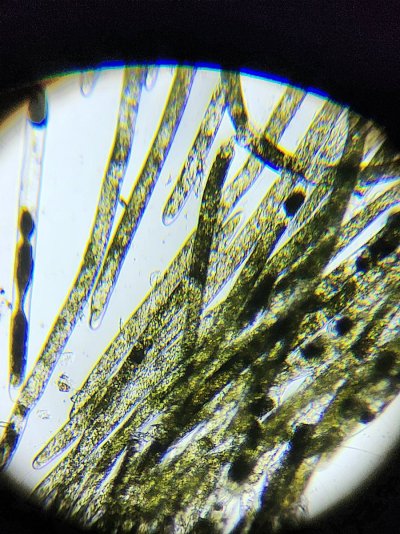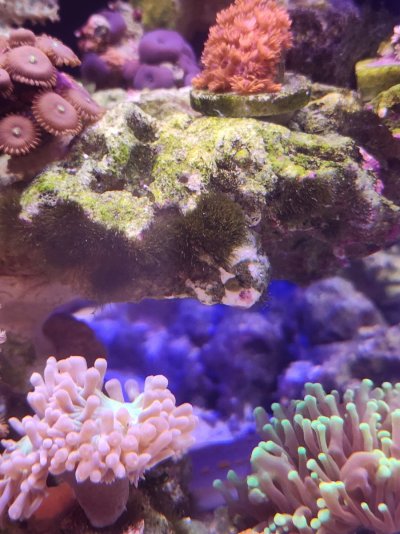I think the reefing community needs to face the fact that some GHA will survive in Ultra Low Nutrient tanks.
I've battled a GHA, which I now believe is Derbesia, for a couple years now and finally have come to the conclusion that some GHA cannot be starved out. I basically starved my tank with Bio-Pellets and super low nutrients; this crap would just keep its green tint and hair like form. I put it in a sterile tank and it looked very nice and green for a month until I tore down the tank. I put it in my blacked out sump for a month and it came out looking very nice and green, ready for prime time in the display tank.
Nothing would eat it. All the snails, tangs, blennies, and sea hares would maybe touch it once when they first got into the tank but that was enough. They would starve to death before eating it. I even stooped to AlgaeFix for months which did slow it down, but never killed it.
It's not Bryopsis but for all it's qualities it acts like it. So I'm finally dealing with it as if it were Bryopsis.
I seriously think this type of GHA is why reefers sometimes say: "Your rocks must be leaching nutrients". Everyone believes that all hair algae can be starved and if you can't do that with your tank. something is wrong with you. It's not true.
I'm now in painful process pulling apart and scrubbing all my rocks down with H2O2. I'll never make a display that can't be broken down and lifted out of the tank again.

I've battled a GHA, which I now believe is Derbesia, for a couple years now and finally have come to the conclusion that some GHA cannot be starved out. I basically starved my tank with Bio-Pellets and super low nutrients; this crap would just keep its green tint and hair like form. I put it in a sterile tank and it looked very nice and green for a month until I tore down the tank. I put it in my blacked out sump for a month and it came out looking very nice and green, ready for prime time in the display tank.
Nothing would eat it. All the snails, tangs, blennies, and sea hares would maybe touch it once when they first got into the tank but that was enough. They would starve to death before eating it. I even stooped to AlgaeFix for months which did slow it down, but never killed it.
It's not Bryopsis but for all it's qualities it acts like it. So I'm finally dealing with it as if it were Bryopsis.
I seriously think this type of GHA is why reefers sometimes say: "Your rocks must be leaching nutrients". Everyone believes that all hair algae can be starved and if you can't do that with your tank. something is wrong with you. It's not true.
I'm now in painful process pulling apart and scrubbing all my rocks down with H2O2. I'll never make a display that can't be broken down and lifted out of the tank again.




















